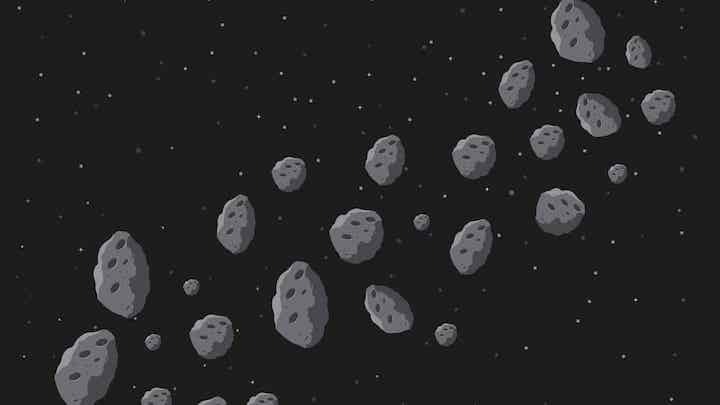9.12.2021
We answer a reader’s question that takes us back 4.6 billion years, to the beginning of the solar system.

This is an awesome question, Jessie. To answer it, we have to board a time-travelling spaceship and head back to the birth of the solar system itself.
Let’s zoom back to about 4.6 billion years ago, to the time just before the solar system existed. Imagine that we’re floating in our spaceship in the Orion Arm of the Milky Way, which is our galactic address – but the Sun and planets aren’t here yet. Instead, when we look out of the spaceship’s window, we see the dark void of space.
But suspended in that void is a gigantic cloud of gas and dust. This is cosmic debris, left over from when a star exploded.
And another star is about to be born right before our eyes.

As we watch, the cloud spins, first slowly and then fast and faster. It’s like an ice skater, who twirls slowly when their arms are thrown out, and faster when they pull their arms in. (Try this at home: instead of ice skates, use a spinning desk chair.)
Because we’re in a time-travelling spaceship, we can speed up time a bit and watch what happens.
As the years whiz by, the spinning cloud of gas and dust begins to flatten into a disc, like a frisbee. It also heats up to a searing temperature.
Soon, the centre of the cloud gets so hot that a star ignites – our newborn Sun.
The Sun is made up of lots of the gas and dust from the cloud, but there is a lot left over, still spinning fast around it.
All those bits of gas and dust begin to collide and stick together. At first, these stuck-together bits are tiny. Then they become the size of pebbles, then rocks, then boulders, then small almost-planets – and then entire planets.
It’s pretty spectacular to watch from our spaceship. We’d see these rocky almost-planets smashing and crashing into each other in a series of violent collisions. From a million tiny specks, the planets we know and love today form, from Mercury right near the Sun out to Neptune way out in the cold reaches of the solar system.
But the story isn’t finished.
Even after the planets are born, we can see that there are still bits of rock left over – the stuff that didn’t end up in the planets. We call these asteroids. They’re made up of rock and metals like iron and nickel. Some pieces are small, just a few metres across, while others are more than 900 kilometres across (about the distance from Melbourne to Sydney, if you’ve ever made that trip).

They are still orbiting around our newborn Sun. Some asteroids are dotted across the solar system, but most of them are marshalled into a ring between the planets of Mars and Jupiter. This is because Jupiter is humongous and has a big gravitational pull on all the other objects in the solar system. It acts like a shepherd and guides all the asteroids into place, into what we now call the asteroid belt.
Astronomers once thought that the asteroid belt used to be a planet that got smashed up into little pieces. But then we realised that there’s not very much stuff in the asteroid belt.
It’s true that there are some big objects there, like Ceres – which has a third of the mass of the entire asteroid belt! Astronomers call it a dwarf planet.
But if you could stick all the asteroids including Ceres together, you’d end up with a planet that is still even smaller than the Moon (which is already just a quarter of the size of the Earth).
So astronomers no longer think that the asteroid belt is a smashed-up planet. Instead, they think it formed in the way we saw through the window of our time-travelling spaceship.
Now, let’s come forward in time and return to the present day – it’s time to disembark our spaceship.
Our journey into the asteroid belt doesn’t have to be over. From here on Earth, here and now, you can look up into the night sky through binoculars or a telescope and spot big asteroids like Pallas, Vesta and Juno.
If you don’t know where to look, go online and check out the Melbourne Planetarium’s Skynotes. The sky is constantly changing, so every month they’ll tell you cool things to spot, from asteroids to planets to constellations. You can also see comets and meteors, which are left over from the birth of the solar system, just like asteroids.
Quelle: COSMOS
